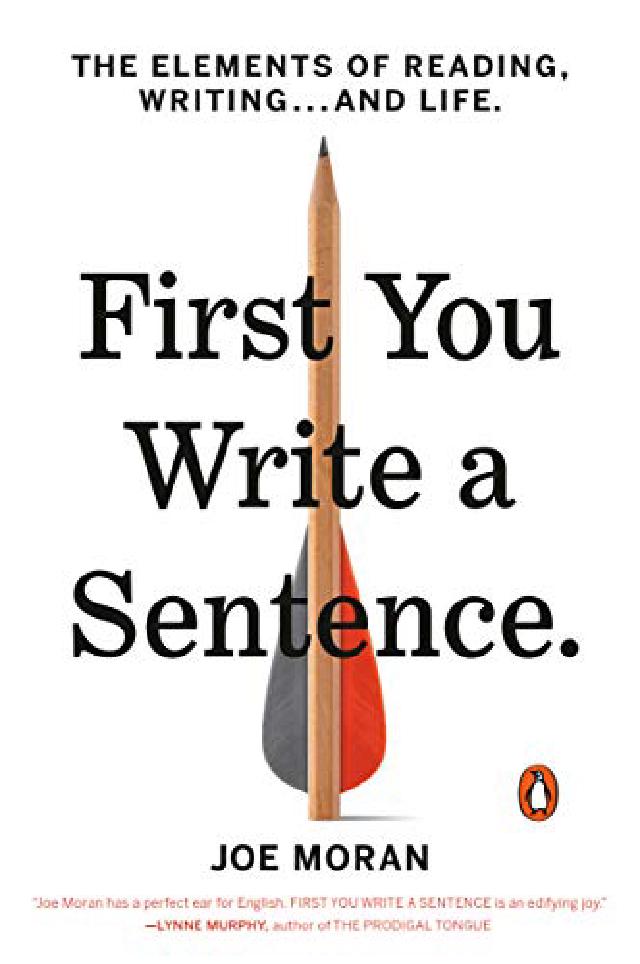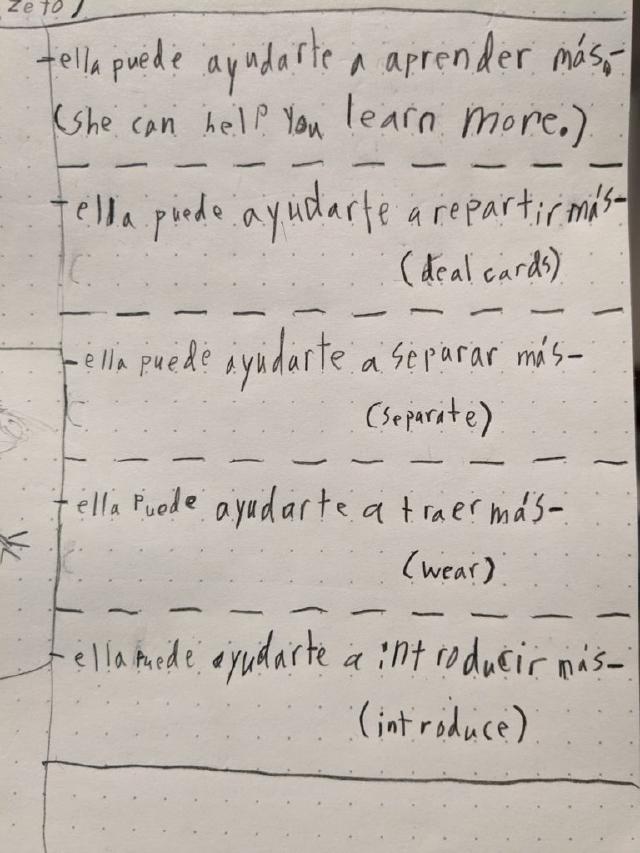
While on an afternoon walk with a friend, the rain unexpectedly started in on us. I thought of Moran’s descriptions of the onomatopoeia of the rain vocabulary, encouraging his readers to be more precise with their words. Rather than just using the plain word, “rain,” Moran suggests we can be more specific.
“Rain is a wet certainty and a vague possibility. It feels more real than precipitation, but less so than drizzle or downpour, which carry the very droplets in their sounds.” This meticulousness is Moran’s strength.
The basic unit of writing is the sentence, Moran contends. He quotes Lewis Carroll:
“For first you write a sentence, And then you chop it small; Then mix the bits, and sort them out Just as they chance to fall: The order of the phrases makes No difference at all.” This is exactly the kind of playful attitude that Moran encourages throughout his book.
Yet he follows this quote with:
“Lytton Strachey said to me: first I write one sentence: then I write another. That’s how I write. And so I go on. But I have a feeling writing ought to be like running through a field.” (Max Beerbohm, quoted in Virginia Woolf’s diary, 1 November 1938.)
This resonated with me because I often do go about my writing like a bricklayer, one methodical piece at a time. I love the possibility of writing with energy and momentum, in the same way I would speed along on my bike.
Rather than a stale, strict boundary between the parts of speech, Moran makes unexpected comparisons.
“Nouns and verbs are the two poles of the sentence. Nouns keep it still; verbs make it move.” I had never considered the balance between the two.
Moran decries using too many nouns.
“When nouns rule over sentences, all the air has been punched out of them. Emptied of life and humanity, they have been refilled with inertia and nothingness. All the imaginative promise of words has been pulped into a lumpy noun gravy, neither liquid enough to flow nor solid enough to be forked.” A lumpy noun gravy! Now that’s a memorable image.
My children have experienced a yard with weeds that keep coming back. So when Moran uses that as an analogy, we get it.
“Adjectives, like weeds cannot be eradicated, only tamed.” Linking the overuse of adjectives with something we want to get rid of is instructive.
For all the years I’ve been teaching writing, I now realize that I could’ve been more playful in my descriptions and definitions of nouns, verbs and adjectives.
If you have a child unwilling to edit, perhaps these comments from Moran will help:
“A sentence is meant to give off sound.” He goes on, “Reading the words aloud obliges you to renotice what you have said. Having to share those words, even if you are alone and it is just with the surrounding air, makes you more fastidious about owning and standing by them.” I actually found myself wanting to read his sentences aloud, just for the pleasure of it, since they were so pleasantly constructed.
Moran excels at metaphors. One of his instructions for building a coherent paragraph describes it in a way children can understand:
“The sentences should feel springy and yet snap together like Legos.” When it comes to linking the ideas, Moran reminds: “writing’s firmest cement comes not from gluey adverbs but from the rhythm and music of how the sentences are arranged.” Another reason to read our writing aloud!
Moran’s long sentences about long sentences are the perfect illustration of his instructions.
“A long sentence should feel like it is pushing at its edges while still keeping its shape. All along its length it will feel ever so slightly chaotic but still composed, never losing its underlying order. It helps if it does not seem too eager to resolve itself, and yet manages to inspire confidence that, eventually, whatever its wild detours and exotic interludes, it will.”
Moran’s instructions for alternating between long and short sentences are succinct and memorable.
“Short sentences give your brain a rest; long ones give it an aerobic workout. Short sentences imply that the world is cut and dried; long ones restore its ragged edges. Short sentences are declarative and sure; long ones are conditional and conjectural. Vary your sentence length and you mirror the way the mind works, veering between seductive certainty and hard-won nuance.”
Moran consistently references other successful writers. For example, he described:
“When David Abbott died, his fellow ad writer Robin Wight wrote that ‘his copy was easier to read than to ignore, so enticing was every next sentence.’ Isn’t that what all writers should want: to make it easier to carry on reading than to stop?”
What a description. “Easier to carry on reading than to stop.” I love having that as a goal!
One current debate is whether children still need to do the work of writing. Moran’s book was published in 2018, before the launch of chatgpt. As some educators worry that chatGPT can reduce the originality of work, I find encouragement in Moran’s comments about the importance of a human brain’s participation, especially in the editing process.
“Much of writing is scut work, and much of rewriting is making our pat phrases and lazy repetitions visible. Algorithms help. By routinizing the mundane tasks, they free the mind to focus on those elusive parts of writing that cannot be done algorithmically.” This could be an excellent argument about which part of the writing needs a human. Moran also declares, “A sentence needs a glint of human intelligence behind it to give it the elusive thing, sentience, that makes it a sentence.” As humans, we are uniquely capable of writing engagingly.
The oft-repeated advice is to “find your voice.” Children and adults alike can be puzzled by what this means. I liked how Moran defined it:
“A written voice is a composite of your skill at selecting and arranging words and your genuine care for and commitment to what they are saying. That voice is not you, but it may be a buried, better-said version of you. It was lost amid your disheveled thoughts and wordless anxieties, until you pulled it out of yourself, as a flowing line of sentences.” Another way of saying this is, “keep trying, keep writing.” You need the quantity of effort in order to make the quality improve.
The action I want to take as a result of reading this book: write more sentences. He gives us all good sentences to imitate.
Inspired by Shurley English exercises, we frequently analyze a sentence and find the way it can be changed. We’ll shift a phrase, or a word, but keep the overall structure. Moran calls a sentence an “ecosystem.” He emphasizes:
“A sentence is a company of words, not a series of slots to be filled by stand-ins. Alter one word and you alter it all.” I agree, and yet have found it helpful to play with the sentences. We gain more information about what works in a sentence when we shift it around.
Ultimately, writing is an act of love.
“Writing a sentence well involves caring. Taking up too much of your reader’s life, by having him read sentences barnacled with needless words, is an ungenerous act.” Moran’s generosity is clear.
I found his book to be motivational and educational. I wouldn’t hand this book to anyone younger than high school age, since they may not be ready to read an entire book about the theories of writing, but sharing sections of his work has been meaningful for my kids.
If you are looking to encourage your child to become a better writer, pick up a copy of Joe Moran’s book and be inspired to become a better writer yourself.
